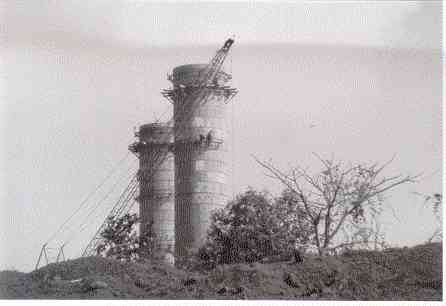
- Political Opposition to the Project
- The Munde Committee Report
- The “Renegotiated” Project
- The CITU Lawsuit
Key Individuals Named in this Report
I. Summary and Recommendations
II. Background: New Delhi and Bombay
III. Background to the Protests: Ratnagiri District
IV. Legal Restrictions Used to Suppress Opposition to the Dabhol Power Project
V. Ratnagiri: Violations of Human Rights 1997VII. Complicity: The Dabhol Power Corporation
VIII. Responsibility: Financing Institutions and the Government of the United States
Appendix A: Correspondence Between Human Rights Watch and the Export-Import Bank of the United States
Appendix B: Report of the Cabinet Sub-Committee to Review the Dabhol Power Project
Appendix D: Correspondence Between the Government of India and the World Bank
While negotiations between the company and the government reached the point of project implementation, opposition parties, namely the Shiv Sena and the BJP—both Hindu nationalist parties—were vocally criticizing the agreement on the grounds that it was fraught with corruption, was not in the best interests of the state, and pandered to multinational corporations, whose involvement in India these parties generally opposed. The controversial project thus remained in the spotlight. In 1994, as the DPC set up operations in Maharashtra and began to come into contact with the local population, the controversy became acute in the communities directly affected. (See below)
39 Center for Indian Trade Unions and Others vs. Union of India and Others, Special Leave Petition Number 7734 of 1997.
On July 7, 1994, Ramdas Nayak, a member of the BJP, filed a High Court case against the Indian government and the Dabhol Power Corporation on the grounds that projects in “core sectors” should not be implemented without transparency and competitive bidding, and that the counter-guarantees violated provisions in the Indian constitution that regulate government borrowing. The suit sought to cancel the PPA and the counter-guarantees between the government and the DPC. The case, however, was dismissed on August 8, 1994.39
The Shiv Sena and BJP sought to harness popular opposition to the project in order to win control of the Maharashtra state government. Opposition candidates promised that they would review the project and accused the Congress (I) government, led by Sharad Pawar, of corruption, lack of transparency and operating against the public interest. The Enron issue, combined with the Shiv Sena-BJP strategy of accusing the Pawar government of not adequately addressing the Bombay riots and Bombay bomb blasts and of siding with Muslims, eventually won the Shiv Sena-BJP coalition control of the Maharashtra government.
![]()